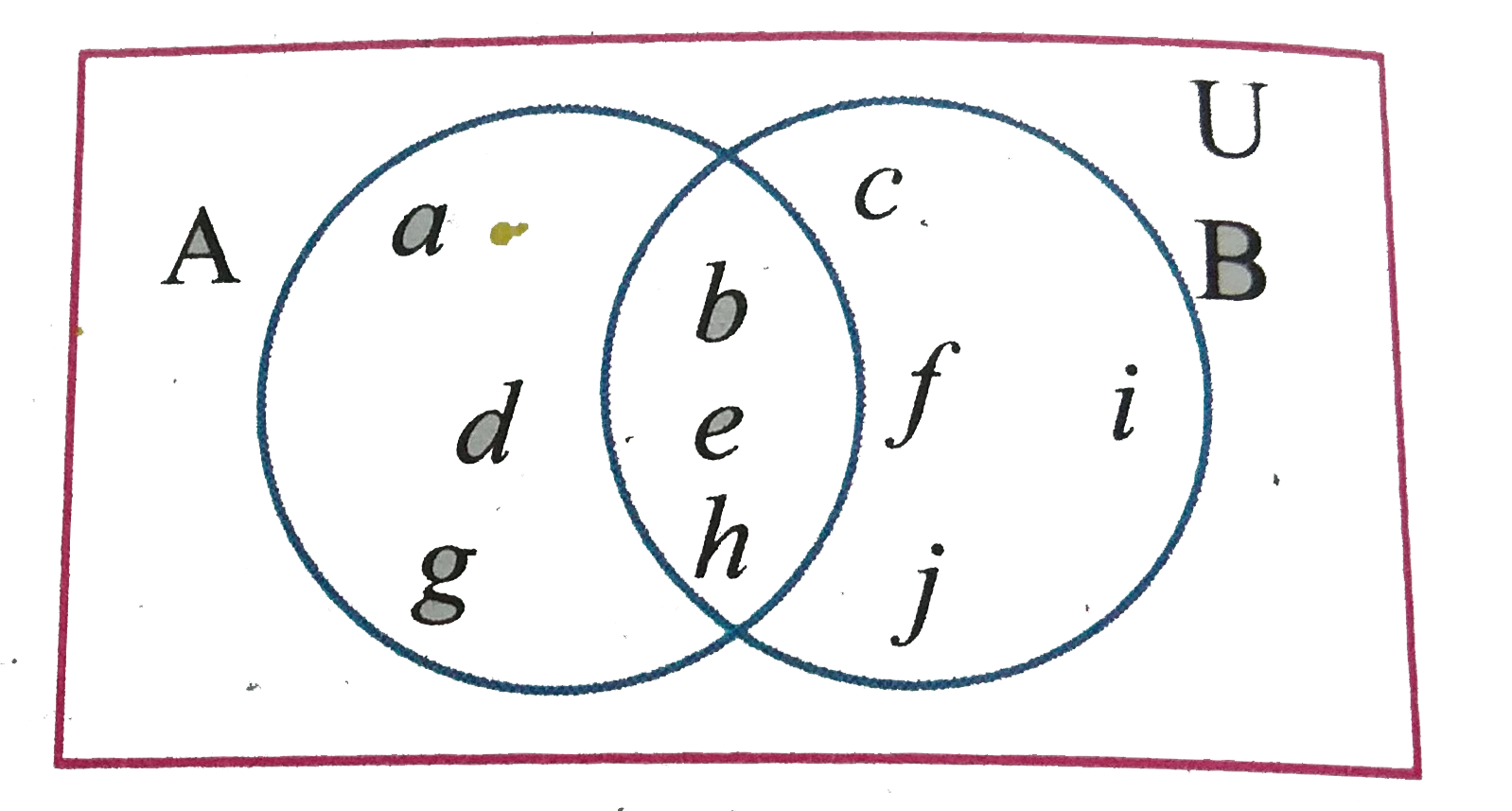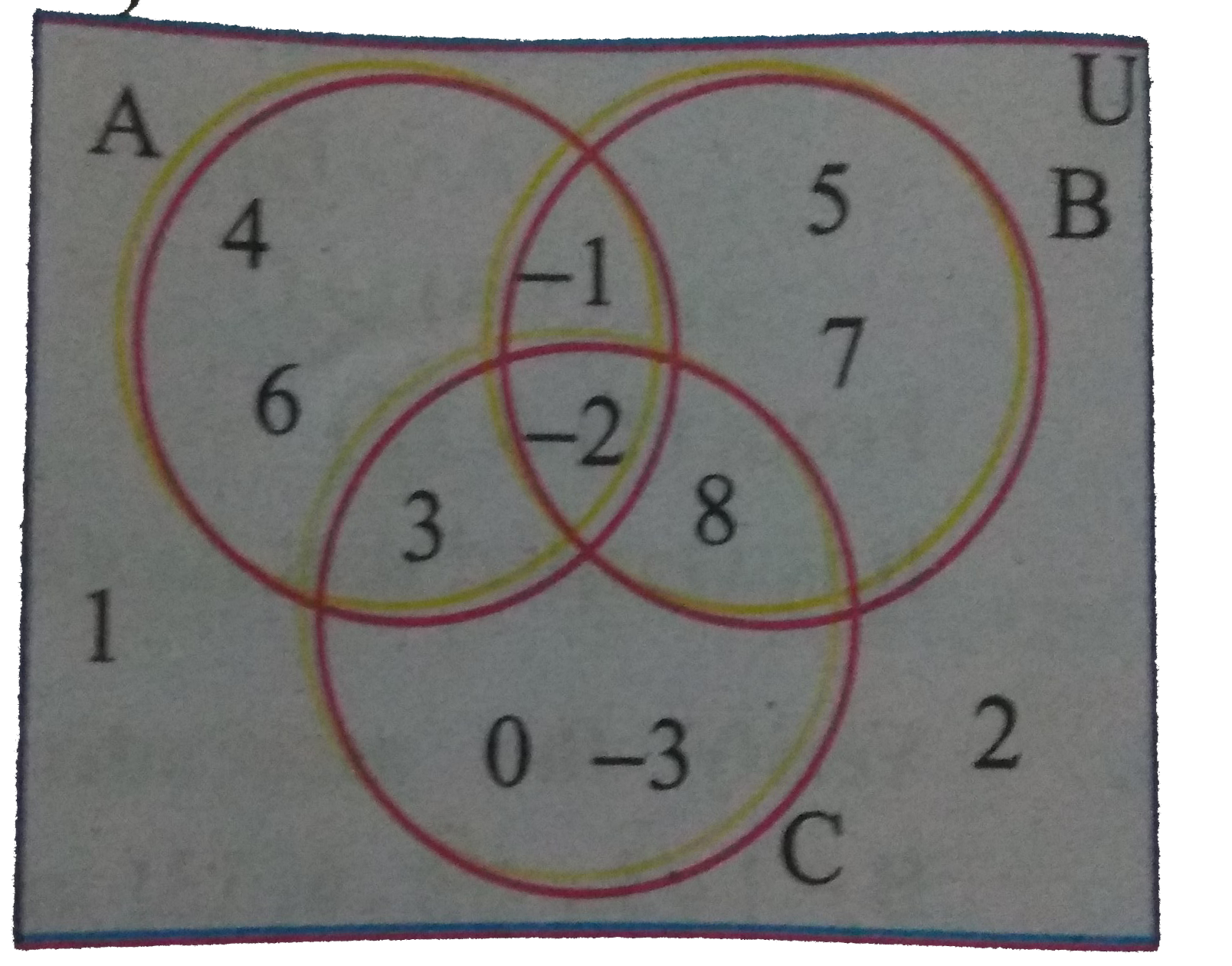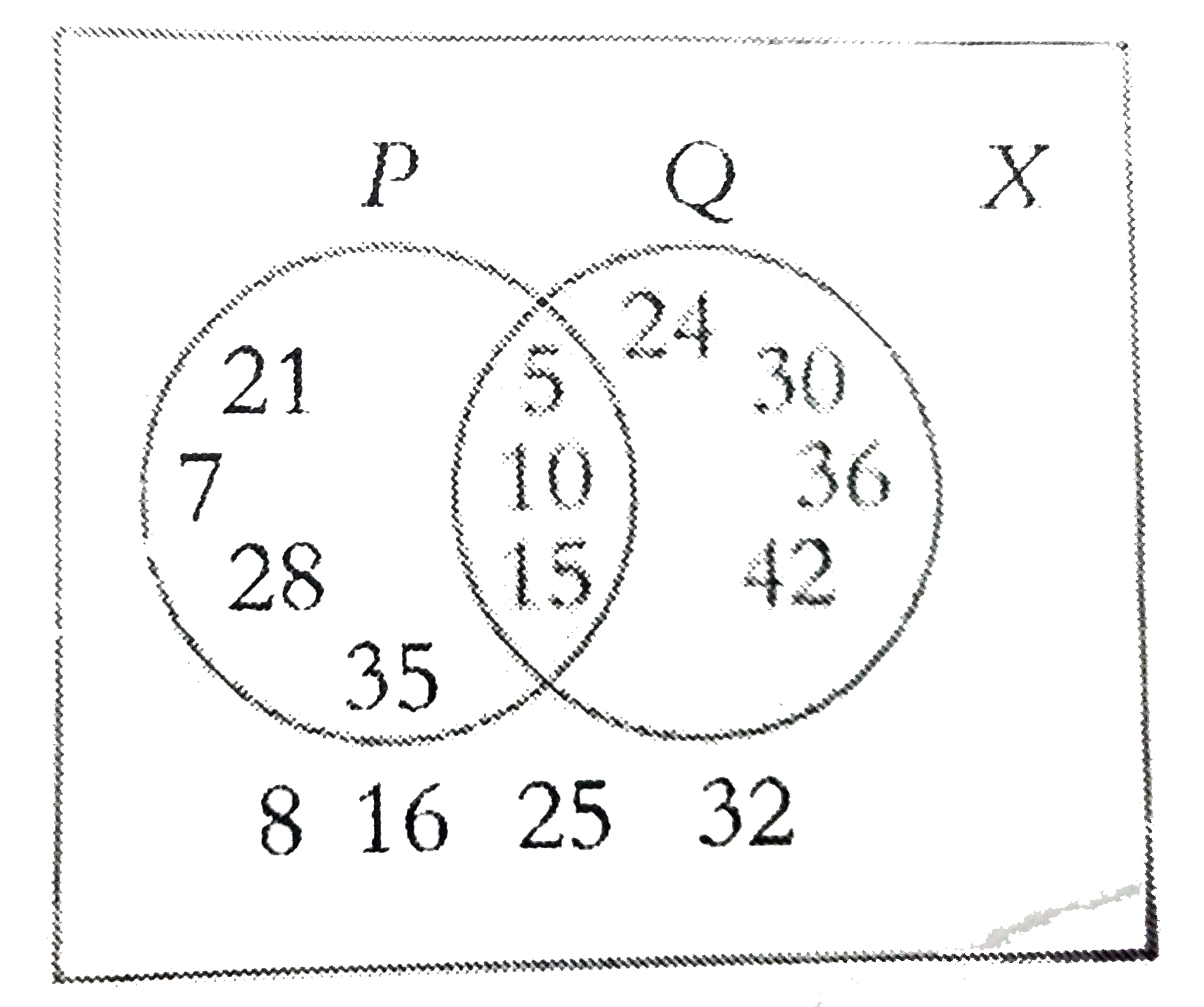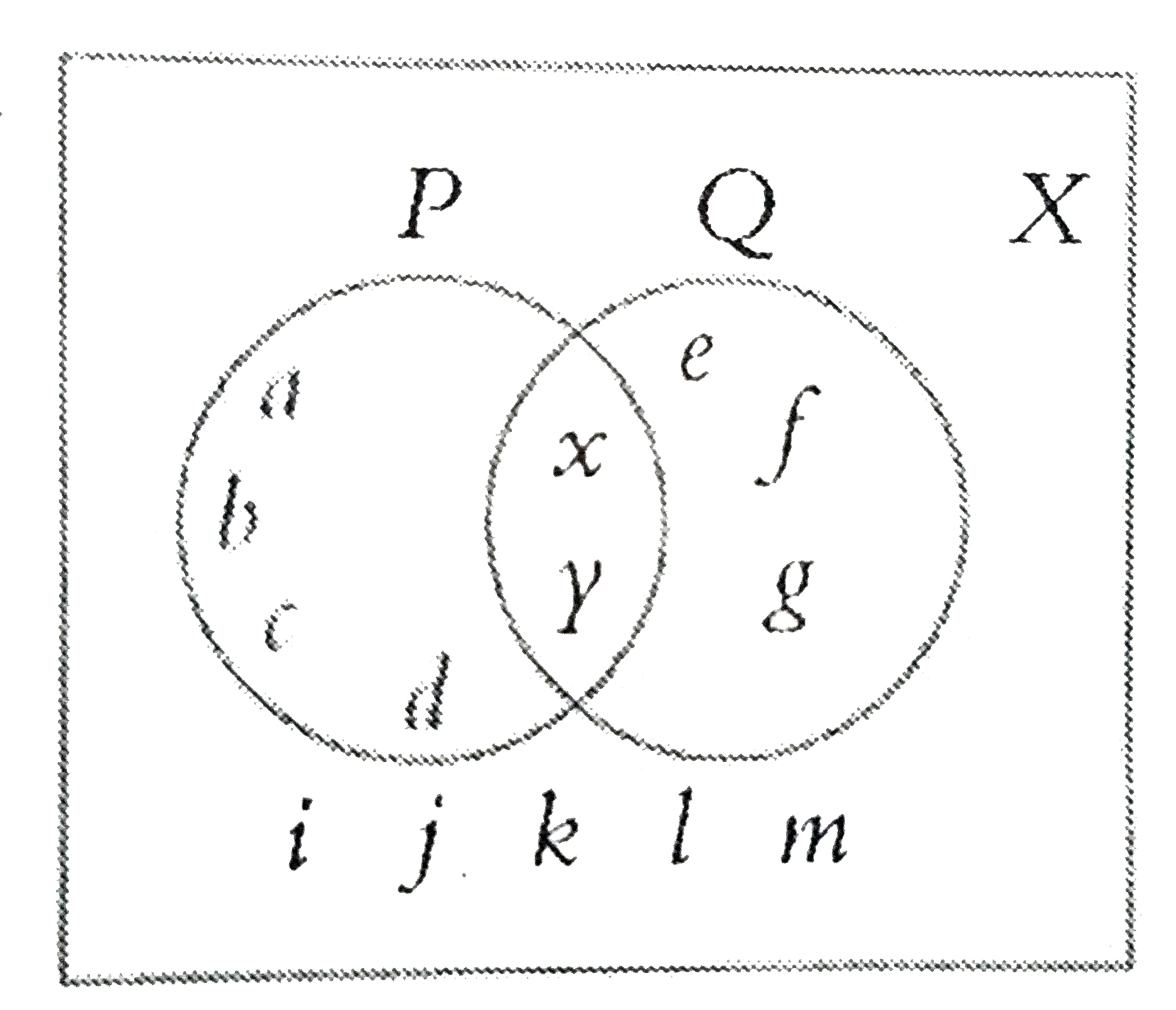From the given venn diagram. Find (i) A, (ii) B, (iii) A∪B, (iv) A∩B also verify that n(A∪B)=n(A)+n(B)−n(A∩B)
 Solution in Tamil
Solution in Tamil
Step by step video & image solution for From the given venn diagram. Find (i) A, (ii) B, (iii) AcupB, (iv) AcapB also verify that n(AcupB)=n(A)+n(B)-n(AcapB) by Maths experts to help you in doubts & scoring excellent marks in Class 9 exams.
Updated on:21/07/2023Topper's Solved these Questions
- SET LANGUAGEBOOK - SURA PUBLICATIONCHAPTER - SET LANGUAGEEXERCISE - EXERCISE 1.7
26 Videos
- SET LANGUAGEBOOK - SURA PUBLICATIONCHAPTER - SET LANGUAGEEXERCISE - TEXT BOOK ACTIVITIES
2 Videos
- SET LANGUAGEBOOK - SURA PUBLICATIONCHAPTER - SET LANGUAGEEXERCISE - EXERCISE 1.5
19 Videos
- REAL NUMBERS BOOK - SURA PUBLICATIONCHAPTER - REAL NUMBERS EXERCISE - UNIT TEST
19 Videos
- STATISTICSBOOK - SURA PUBLICATIONCHAPTER - STATISTICSEXERCISE - Section -C
2 Videos
Similar Questions
Which of the following is correct?
View SolutionDiscuss and give as many examples of collections from your daily life situations, which are sets and which are not sets.
View SolutionUsing the adjacent venn diagram, find the following sets :

(i) A - B
(ii) B - C
(iii) A'∪B'
(iv) A'∩B'
(v) (B∪C)'
(vi) A−(B∪C)
(vii) A−(B∩C)
View SolutionWhich one of the following , regarding sum of two irrational number , is true ?
View SolutionCalculate the mean of the following distribution using Assumed Mean Method.

View SolutionIf n(A−B)=25,n(B−A)=15 and (A∪B)=60. Then a(A∩B)=________
View SolutionDetermine the point of symmetry of a regular hexagon.
View SolutionMatch the following Column A to Column B

View SolutionMatch the following Column A to Column B

View SolutionMatch the following Column A to Column B

View SolutionThe inequation represented by the graph given below is :
View SolutionThe inequation that best describes the graph given below is _________
View SolutionThe inequation that best describes the following graph is _________
View Solution
From the above Venn diagram ,find n(P-Q)+n(Q-p)=_____.
View Solution
From the above Venn diagram ,Find n(P−Q)+n(Q−P)
View Solution
